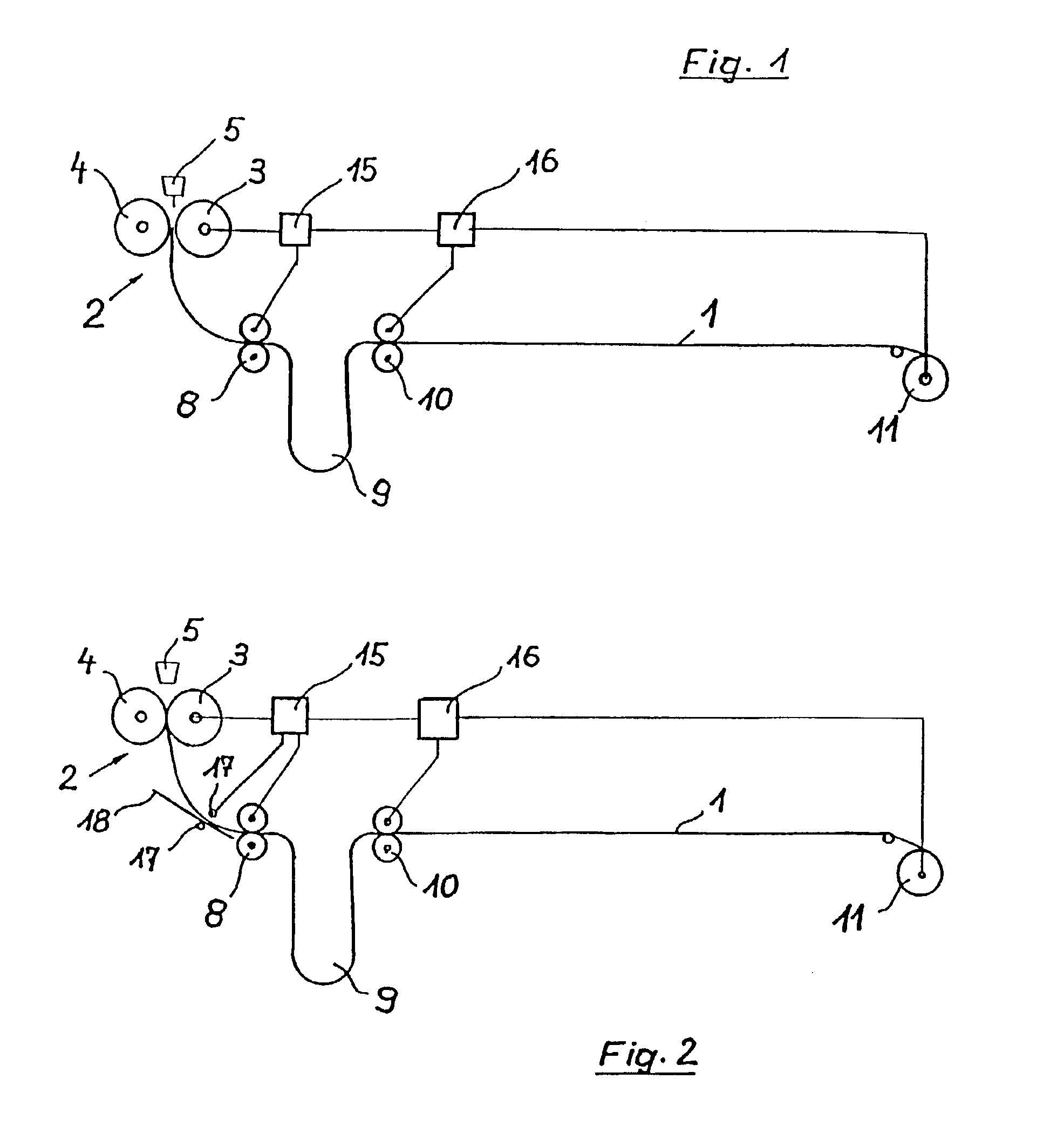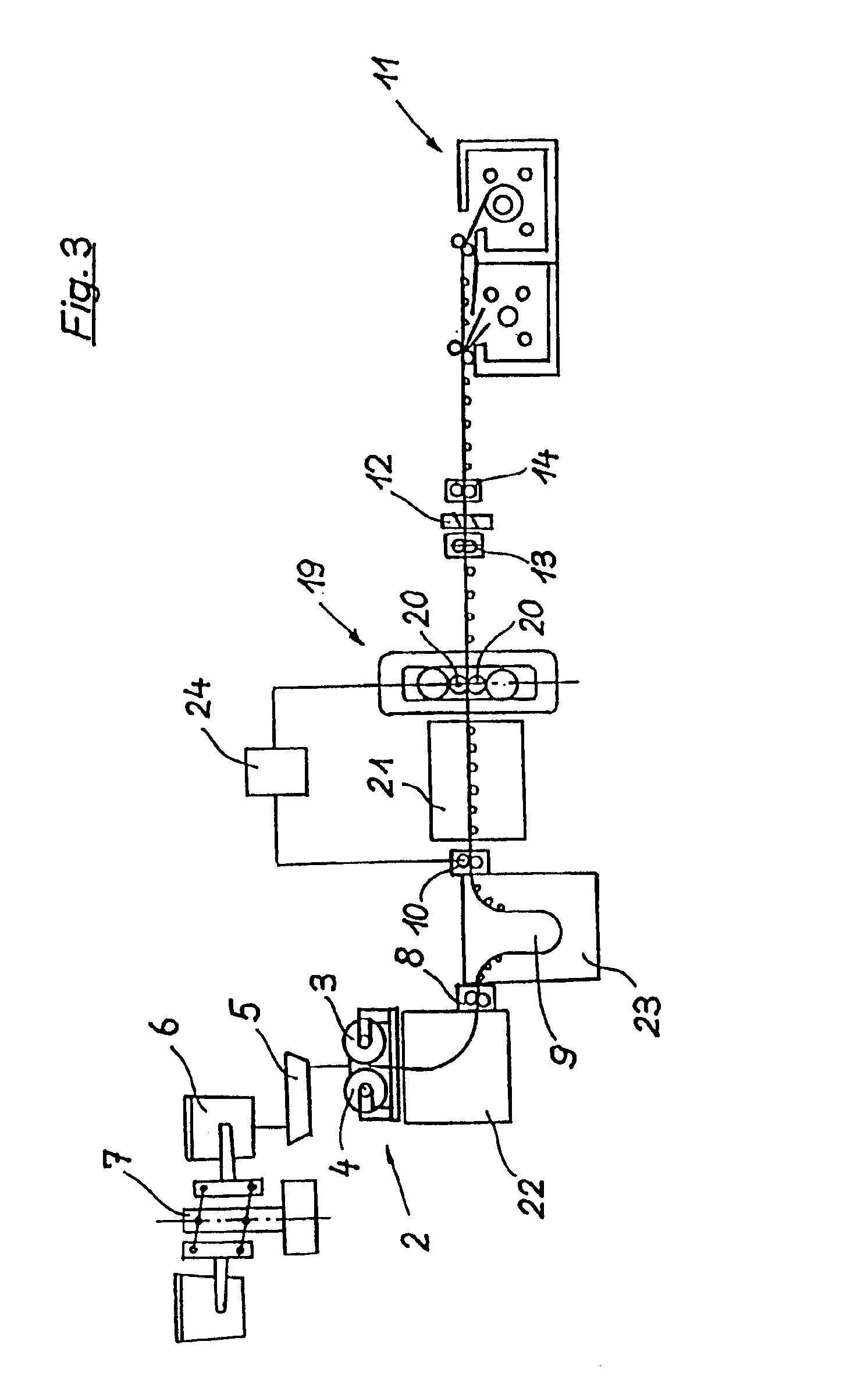Method and installation for producing a metal strip
a technology of metal strips and production methods, applied in the direction of manufacturing tools, flexible work arrangements, tensioning/braking arrangements, etc., can solve the problems of cracks and damage to the strip surface, affecting the quality of the product produced, and rising the risk of cracking in the immediate vicinity of the casting gap, so as to achieve the highest possible strip quality
- Summary
- Abstract
- Description
- Claims
- Application Information
AI Technical Summary
Benefits of technology
Problems solved by technology
Method used
Image
Examples
Embodiment Construction
[0023]According to an advantageous refinement of the invention, the position of the metal strip in the region of deflection from the vertical direction into the horizontal direction, preferably the resting point of the metal strip on a deflecting support device, is detected by measurement by means of a strip location device and a strip transport speed in the first driving-roller stand and / or the casting speeds in the casting gap are regulated as a function of this. By virtue of a deflecting support device which is designed as an arcuate guide scaffold and is mounted pivotably in the plant supporting framework and extends only over a subsection of the path from the first driving-roller stand to the two-roll casting device, regulatability within a narrow, but sufficient range is maintained.
[0024]In so far as no further treatment steps on the metal strip which influence the strip speed are provided, the winding-up of the metal strip under tension can advantageously be regulated as a fu...
PUM
| Property | Measurement | Unit |
|---|---|---|
| thickness | aaaaa | aaaaa |
| thickness | aaaaa | aaaaa |
| thickness | aaaaa | aaaaa |
Abstract
Description
Claims
Application Information
 Login to View More
Login to View More - R&D
- Intellectual Property
- Life Sciences
- Materials
- Tech Scout
- Unparalleled Data Quality
- Higher Quality Content
- 60% Fewer Hallucinations
Browse by: Latest US Patents, China's latest patents, Technical Efficacy Thesaurus, Application Domain, Technology Topic, Popular Technical Reports.
© 2025 PatSnap. All rights reserved.Legal|Privacy policy|Modern Slavery Act Transparency Statement|Sitemap|About US| Contact US: help@patsnap.com



